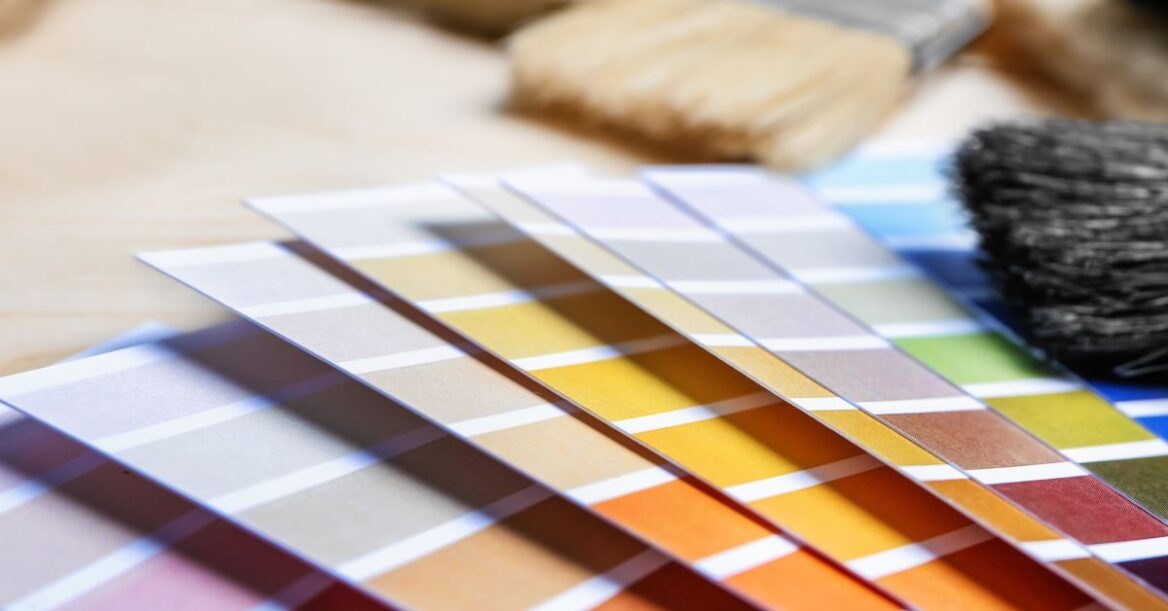Imagine walking into a room and feeling instantly calmer, more energetic, or happier. That’s the power of colour psychology at work in your home.
It’s more than just paint on the walls; it’s an ambience creator, mood enhancer, and personality broadcaster all in one.
Let’s dive into how you can harness this power to make your home a reflection of your best self.
Introduction to Colour Psychology
Colour psychology is the study of hues as a determinant of human behaviour. Colours can influence how we feel, think, and act.
In the context of your home, the right colour choices can contribute to well-being and happiness. Before we pick up the paintbrush, let’s get to know the basics of this fascinating field.
The Basics of Colour Psychology
At its core, colour psychology looks at how colours affect our daily lives. Red might increase energy levels, blue can soothe, and green might enhance feelings of serenity.
These effects are so subtle that we often don’t realize they’re at play. Understanding the basics gives us a roadmap to decorating our homes with intention.
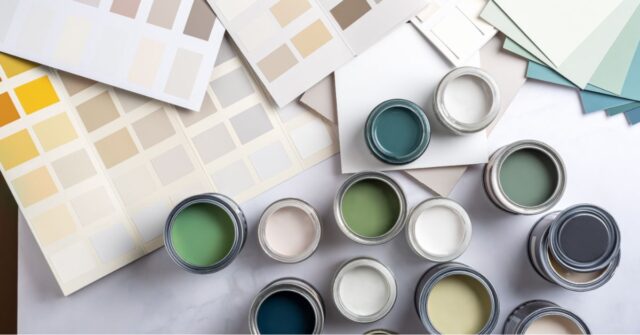
History and Evolution of Colour Psychology
The relationship between colour and human emotion goes back centuries, finding its roots in ancient civilizations.
Egyptians and Greeks used colours to achieve holistic benefits, from healing to psychological comfort.
Modern colour psychology has evolved to incorporate scientific studies, giving us a deeper insight into how colours impact our mood and behaviour at home.
The Science Behind Colours and Emotions
There’s a scientific backbone to the emotional effects of colours. Different wavelengths of light trigger varied responses in the brain, affecting our hormones and emotional state.
This is why a sunny yellow can lift our spirits, while a deep blue can calm a busy mind.
Understanding How Colours Influence Mood
Colours can sway our mood in nuanced ways. Warm colours like red, orange, and yellow can evoke feelings of warmth and comfort but also anger and frustration when overused.
Cool colours such as blue, green, and purple, offer a sense of calm but might lead to feelings of sadness or indifference if not balanced correctly.
Colour Preferences and Individual Differences
Our unique experiences, culture, and personal preferences play a significant role in how we perceive colour. While one person may find orange to be uplifting, another might find it overwhelming.
Tailoring your home’s colour palette to your personal preferences is key to creating spaces that genuinely resonate with you.
Applying Colour Psychology in Your Home
Knowing the theory is one thing; applying it is where the magic happens.
Whether you’re a fan of bold, vibrant hues or prefer muted, earthy tones, incorporating colour psychology into your home decorating can transform your space.
Colour Schemes for Living Spaces
Living spaces are the heart of the home, where relaxation and social interactions take place.
Warm neutrals can offer a cozy backdrop, while strategic pops of colour like teal or burnt orange can add vibrancy and energy.
Choosing Colours for Bedrooms
Bedrooms are our personal sanctuaries. Soft blues, lavenders, and gentle greens promote rest and relaxation, making them ideal for this intimate space.
Avoid high-energy colours like red, which may hinder your ability to wind down.
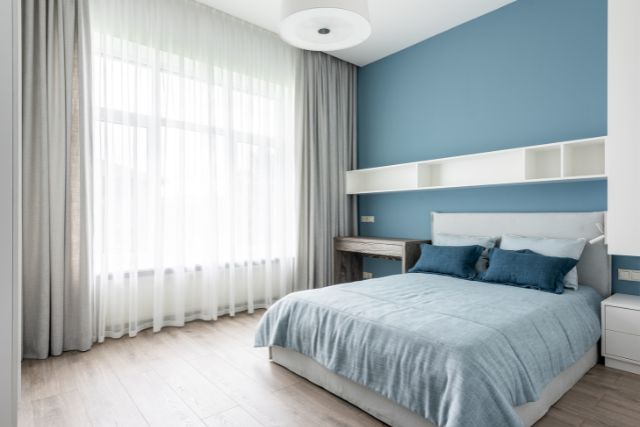
Colours for Productivity: Home Offices and Study Areas
Need a boost of productivity? Shades of green can enhance concentration and efficiency, perfect for home offices and study areas. Balance it with soft neutrals to keep the space light and airy.
Kitchen and Dining: Energizing Colours
The kitchen is often the busiest room in the house. Bright whites, yellows, or even red accents can stimulate the appetite and encourage conversation, making mealtime a lively event.
Relaxing Colours for Bathrooms
Bathrooms should be a retreat for relaxation. Soft shades of blue and green can turn your bathroom into a spa-like oasis, promoting tranquillity and calm.
Colour Psychology by Room
Every room has its purpose, and understanding the role of colour psychology can help us enhance these spaces further.
The Living Room: Creating a Welcoming Space
A living room should welcome guests with open arms. Warm, light hues invite conversation and make guests feel at home, while soft greens and blues can calm the mind and soothe the spirit.
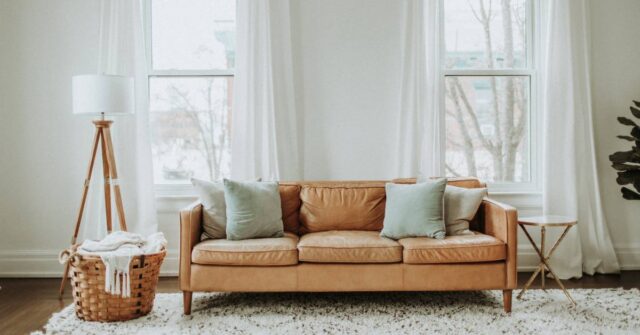
The Bedroom: Promoting Rest and Relaxation
Your bedroom is your escape from the world. Pastel shades and soft textures can help you leave your worries at the door, preparing you for a restful sleep.
The Kitchen: Stimulating Appetite and Conversation
A lively kitchen can be the family’s gathering spot. Reds and oranges are appetite stimulants, but remember to use them as accents to avoid overwhelming the senses.
The Home Office: Enhancing Focus and Creativity
A splash of green in your home office can improve focus and creativity, making it easier to tackle the day’s tasks. Balance it with natural light for an even more invigorating effect.
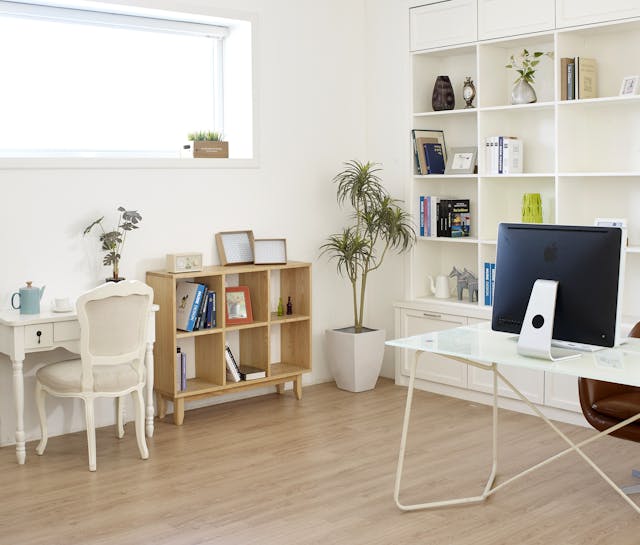
The Bathroom: Encouraging Calm and Serenity
Light blues and greens in the bathroom can help you start the day with a clear head or unwind in the evening. These colours mimic nature, promoting a sense of peace and renewal.
Choosing the Right Colours for Your Home
Selecting the right colours for your home involves more than following trends; it’s about creating a space that reflects your personality and suits your emotional needs.
Considerations for Selecting Colours
Consider the room’s function, size, and amount of natural light when choosing colours. A small, dimly lit room might benefit from lighter colours to make it feel more spacious and welcoming.
Understanding Colour Trends
While it’s important to create a space that feels personal, keeping an eye on colour trends can inspire fresh ideas and contemporary looks for your home.
Integrating Personal Preferences with Colour Psychology
Ultimately, the best colour for any room is one that feels right to you. Combine your personal preferences with the principles of colour psychology for a home that’s both stylish and psychologically supportive.
Practical Tips and Tricks
Here are some hands-on tips to help you incorporate colour psychology into your home effectively and creatively.
Using Colour in Small Spaces
Light and bright colours can make small spaces appear larger and more open. Mirrors and reflective surfaces can amplify this effect, creating an illusion of more space.

Combining Colours: Do’s and Don’ts
When combining colours, balance is key. Use a 60-30-10 rule: 60% of a dominant colour, 30% secondary colour, and 10% accent colour to create harmony and balance.
Lighting and Its Impact on Colours
Natural light reveals the truest colour, while artificial lighting can alter how a colour looks. Test your paint colours at different times of the day to see how they change with the light.
Conclusion: Bringing It All Together
Integrating colour psychology into your home decorating is a journey of discovery. It’s about finding what makes you feel comfortable, energized, and truly at home.
Experiment, explore, and don’t be afraid to express yourself. After all, your home is your canvas.

